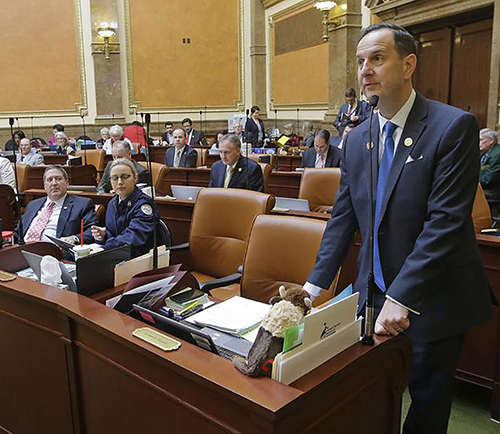Pharmaceutical tourism, like medical tourism, casts light on healthcare’s true costs and identifies patient populations that bear the brunt of growing drug prices
You’ve heard of medical tourism, where patients travel to other countries to receive low-cost, high-quality medical care. Now the State of Utah is introducing “pharmaceutical tourism” to state employees, who will be paid to make trips to Mexico to purchase certain prescription drugs.
The State of Utah is not alone in its use of this strategy. Prescription medication costs are skyrocketing for many critical drugs. To reign in those costs, several organizations are incentivizing their employees to purchase those drugs less expensively outside of the US. Clinical laboratories and anatomic pathology groups that perform companion diagnostic tests associated with certain high-priced therapeutic drugs might see more of their patients decide to cross international borders to access the drugs they need.
This pharmaceutical tourism highlights how complex US laws hide the true cost of prescription drugs from patients and their employers. It also raises the question: how might pharmaceutical tourism impact retail pharmacies in this country?
Saves Patients Money, but at What Cost?
The Public Employees Health Plan (PEHP) for Utah state employees recently announced a pharmacy tourism program. Its members can receive free air travel and $500 in cash to fill 90-day prescriptions in Mexico for certain higher-cost medications.
“The prescription drugs received in Mexico are the same quality and from the same manufacturer as those sold in the US,” said Travis Tolley, Clinical Management Director at PEHP Health and Benefits, in a news release. “The difference is the price you pay. For example, a 90-day supply for the average cost of an eligible drug in the US is over $4,500 per month and is 40-60% less in Mexico. The substantial savings allow us to reward our members for seeking lower-cost options.”
Participants in the program receive round-trip airfare from Utah to San Diego for themselves and a companion, followed by transportation to a clinic in Tijuana where their prescriptions are filled. They also can receive a taxable $500 cash bonus for each trip—up to four trips/year. The airfare from Salt Lake City to San Diego typically costs around $300.

PEHP, which covers 160,000 public employees and family members, offers the pharmacy tourism program for 13 specific medications where a vast disparity in cost exists between the US and Mexico.
The drugs that qualify for the program along with the most common illnesses they treat are:
- Ampyra: multiple sclerosis;
- Aubagio: multiple sclerosis;
- Avonex: multiple sclerosis;
- Copaxone: multiple sclerosis;
- Enbrel: autoimmune disorders such as psoriatic arthritis and rheumatoid arthritis;
- Forteo: osteoporosis;
- Gilenya: multiple sclerosis;
- Humira: arthritis, plaque psoriasis, ankylosing spondylitis, Crohn’s disease, ulcerative colitis;
- Orencia: rheumatoid arthritis;
- Otezla: psoriasis;
- Stelara: plaque psoriasis, psoriatic arthritis;
- Tecfidera: psoriasis; and,
- Zytiga: prostate cancer.
One of the more expensive drugs on the list, Avonex, costs approximately $6,700 for a month’s supply in the US compared to only about $2,200 at the contracted clinic in Tijuana. That’s a savings of approximately $13,500 for a three-month supply, which compensates for the program’s $500 cash reward and transportation costs.
Not the First Time PEHP Tried Medical Tourism
PEHP previously offered free airfare to members willing to fly to other countries for medical procedures and prescriptions. However, without the cash incentives, participation was low. The health plan hopes the lure of $500 per trip will increase participation rate.
UnitedHealthcare (UHC) also is experimenting with ways to lower prescription drug costs. Last year, they introduced My ScriptRewards. The program incentivizes members to opt for less expensive medications. Participants in this program receive up to $500 in prepaid debit cards to help defray their medical costs.
Currently, My ScriptRewards can only be used for select antiviral medications (Cimduo plus Isentress or Cimduo plus Tivicay) to treat human immunodeficiency virus (HIV). And, it’s only available to UHC commercial plan members who are covered by group plans. However, UHC plans to expand the program to include other high-cost specialty medications in the future.
According to the Centers for Disease Control and Prevention (CDC), prescription medications account for 9.8% of national health expenditures. And in 2017, Quintiles and IMS Health, Inc. (now IQVIA), a company that compiles data for the pharmaceutical industry, estimated that prescription spending in the US will reach an annual cost of $580-$610 billion by 2021.
Medical tourism is not new. Dark Daily has covered the trend many times in e-briefings such as, “Medical Tourism Continues to Flourish as U.S. Patients Seek Lower Cost Healthcare in Overseas Countries.” Opportunities still exist for pathology groups and medical laboratories in the US to provide reference or esoteric diagnostic services to healthcare providers in other countries.
And, with prescription costs soaring, it’s likely insurance providers will continue to seek new ways to curtail costs. In an era when many medical laboratory companies are charging sky-high prices for their proprietary tests and test panels, might “clinical laboratory tourism” be the next trend to emerge?
—JP Schlingman
Related Information:
UnitedHealthcare to Pay Patients to Choose Cheaper Drugs
To Fight High Drug prices, Utah Will Pay for Public Employees to go Fill
US Prescription Drug Spending as High as $610 Billion by 2021Medical Tourism Continues to Flourish as U.S. Patients Seek Lower Cost Healthcare in Overseas Countries




Most who administer and oversee benefits for an employer know that because of the dollars spent in the lobbying of drugs and insurance plans, we cannot depend upon a political solutions to sufficiently lower our medical and drug costs. More states and other employers will be thinking outside the box and finding solutions such as medical and drug tourism. Unique regional and local partnerships are already forming that focus more on quality outcomes and overall lower costs for both the employees and their employer. There is always more than one way to skin to proverbial cat.